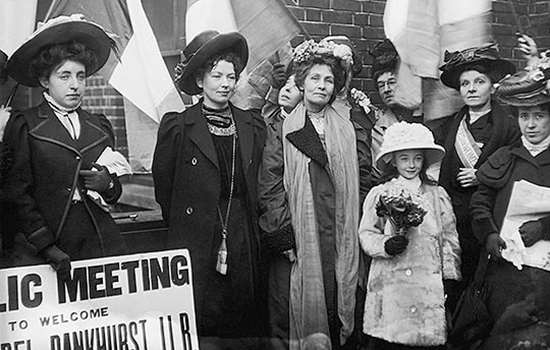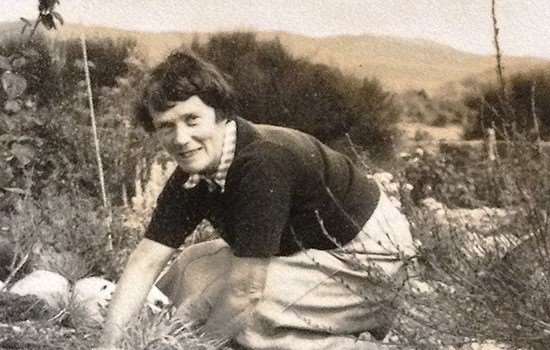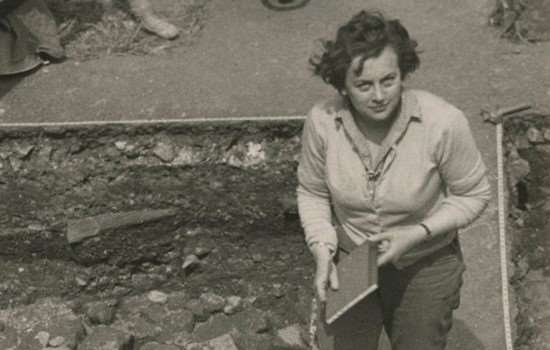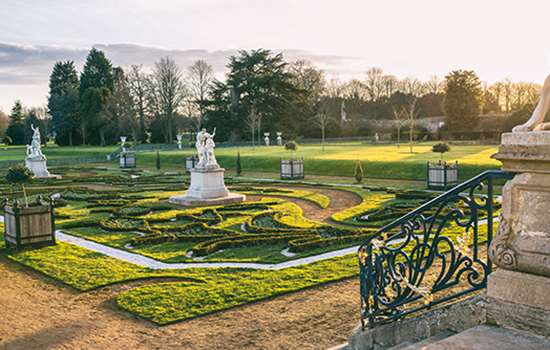‘A Lady’s Province’
It was not uncommon for a garden to be made specifically for a woman. Robert Dudley created a garden at Kenilworth for Queen Elizabeth I to enjoy during her visit in 1575, and in the 1760s ‘Capability’ Brown was contracted by Sir John Griffin Griffin to create ‘Lady Griffin’s Garden’ at Audley End. Women have also been associated with involvement in the flower garden. Often close to the house and small-scale, it was both spatially and ideologically aligned with her domestic role.
However, evidence of a woman’s input into the overall garden design is scarce and it was generally their husband who would commission, and work directly with, a garden designer. Audley End’s garden may be described as for Lady Griffin, but the evidence suggests that the design and ideas were solely those of Sir John and ‘Capability’ Brown.
By the 19th century there were more publications and advice about gardens directed to women. Jane Loudon is probably the most famous author with her influential Gardening for Ladies, published in 1840. Limitations remained, however, as Loudon wrote in The Lady’s Country Companion (1845) that she ‘had not intended saying any thing (sic) about the kitchen-garden, as it hardly comes within a lady’s province’.
Anne Etterick at Belsay Hall
In the records of the Middleton family of Belsay Hall it is recorded that Anne Etterick (Lady Middleton) had ‘gardening tastes.’ She married Sir William Middleton in 1725 and family tradition dictated that an area of waste ground was ‘laid out by her as a kind of wild garden’.
Anne is also recorded as introducing large quantities of snowdrops, many of which were found along a route known in the 19th century as ‘Lady Middleton’s walk’. The garden made by Anne is no longer visible, obscured by changes made by later owners, and sadly no other details are available to tell us more about what this garden looked like or Lady Middleton’s involvement in the design.
Henrietta Howard at Marble Hill
Marble Hill was to be a retreat for Henrietta Howard and a product of her hard-won independence. She had survived a turbulent childhood, an abusive first marriage, and 20 years in the royal household as a servant to Princess Caroline (later Queen Caroline) and mistress to George, Prince of Wales (later George II).
Letters from the time give us some insight into Henrietta’s involvement in the design of the garden at Marble Hill – we know she participated in the initial discussions and met with garden designers on site. Without more evidence we can only guess at the extent of her involvement, but as she was the sole owner and was fashionable and well-connected, it is hard to imagine she did not have her own ideas to bring to the table.
The grotto that was built at Marble Hill in the 1730s shows further evidence of Henrietta’s direct involvement. Grotto decorating was a fashionable pastime for women in the 18th century and a letter to Henrietta reveals discussions she had with other female grotto decorators, about the skills and knowledge required for the practice.
Jemima Marchioness Grey at Wrest Park
Jemima had a close interest and deep emotional attachment to the gardens at Wrest Park, having lived at the estate since her childhood. She inherited Wrest Park from her grandfather in 1740 and like Howard at Marble Hill, she seems to have had full autonomy over the design of the gardens, and enjoyed doing so.
Jemima was well-informed and had been tutored in garden design, surveying techniques, geometry and astronomy by the great polymath, Thomas Wright. It is vividly apparent from her letters that she had a vision and grand scheme for the gardens at Wrest Park, only using professional garden designers and contractors for help with achieving this vision. In 1748 she writes how she will ‘visit my Workmen at the Serpentine Canal…it is at present the great Object of my attention’.
Jemima seems to have been intimately involved with every detail, with her daughter often writing for instructions on what to do. In 1775 this involved asking whether she ‘would permit him [the gardener] to take away the Weeping Willow planted near the Gravel Walk’.
Even when working with the renowned garden designer ‘Capability’ Brown on an area with a grove she left him working within strict parameters: ‘don’t let him in any way shorten the terrace at that corner of the Grove’.
Lady Hester Stanhope at Walmer Castle
In the early 19th century Lady Hester Stanhope was involved in changes to the garden at Walmer Castle. She was the niece of Sir William Pitt, who was at that time Lord Warden of the Cinque Ports. Hester stayed at Walmer Castle on and off between August 1803 and October 1805, occupying herself with cultivating ‘a frightful barren bit of land behind the castle’, describing herself as having ‘the charge of improvements here’.
We know that the beginning of the planting at Walmer pre-dated Hester’s time there, but her involvement in adding to and amending her uncle’s original design is clear. For example, she was involved with agreeing upon a planting plan for the chalk pit (now known as the glen) and filling it up ‘with a variety of creepers, furze, broom, or about anything that will grow, & make it look less barren’.
Emma Darwin at Down House
Although Charles Darwin used the garden at Down House for his experiments, it was his wife, Emma Darwin, who had charge of the day-to-day running, design and management of the garden. Their son, Francis Darwin, wrote in 1883 how his father ‘took no share in the management of the garden which was my mother’s business.’ This involved the task of ordering plants for the garden and in 1878 Emma wrote how she had ‘done the weary job of writing for bulbs’.
In 1879, when thinking about a new garden design, it is clear that Emma was in charge. She writes how she is:
scheming greatly how to get some more room for flowers such as roses & thought of destroying the holly hedge down to the garden & widening that piece of ground; but I am scheming another plan, as I shd [sic] be sorry to lose the Holly hedge.
Changing Times
Although the story of garden design is often considered the province of men, when circumstances allowed, women could have a considerable influence. The cases of Jemima at Wrest Park and Henrietta at Marble Hill are unique examples where women had the freedom and position to apply their passion for garden design. Unfortunately examples of women in history with such privileges and liberties, are few and far between.
By the late 19th century, however, a handful of women were able to become professional garden designers. Gertrude Jekyll is perhaps one of the most influential from this period – a famous advocate of the Arts and Crafts style in gardens.
Women’s success in this field is reflected in more recent schemes at our historic properties. In 1997 a new area of the garden was opened at Walmer Castle, created by award-winning garden designer Penelope Hobhouse as a gift to the Queen Mother on her 95th birthday. In 2000 a new border at Eltham Palace was opened, which was designed by another leading garden designer Isabelle van Groeningen. Their designs form part of a long – though often untold – history of women’s contribution to our gardens.
Written by Emily Parker
Further Reading
Bending, S, Green Retreats: Women, Gardens and Eighteenth-Century Culture (Cambridge, 2013)
Bennet, S, Five Centuries of Women & Gardens (London, 2000)
Horwood, C, Gardening Women: Their Stories From 1600 to the Present (London, 2010)
Way, T, Virgins, Weeders and Queens (Stroud, 2005)
Top image: Under the direction of Jemima, Marchioness Grey, the waters surrounding the garden at Wrest park were modified to look less formal
Explore More
-

Women in History
Read more about the women that shaped the course of English history, from great queens, writers and scientists, to those that broke the mould or remain largely unnamed.
-

Weeding Women: Shaping England's Gardens
Explore the unsung role of ‘weeding women’ in the history of English gardens, and the difficulties of tracing their stories.
-

Groundbreaking Female Archaeologists
Read about some of the female archaeologists who worked on sites now cared for by English Heritage.
-

Visit our Gardens
Find beautiful gardens to visit and learn more about the history of gardens through the ages.
